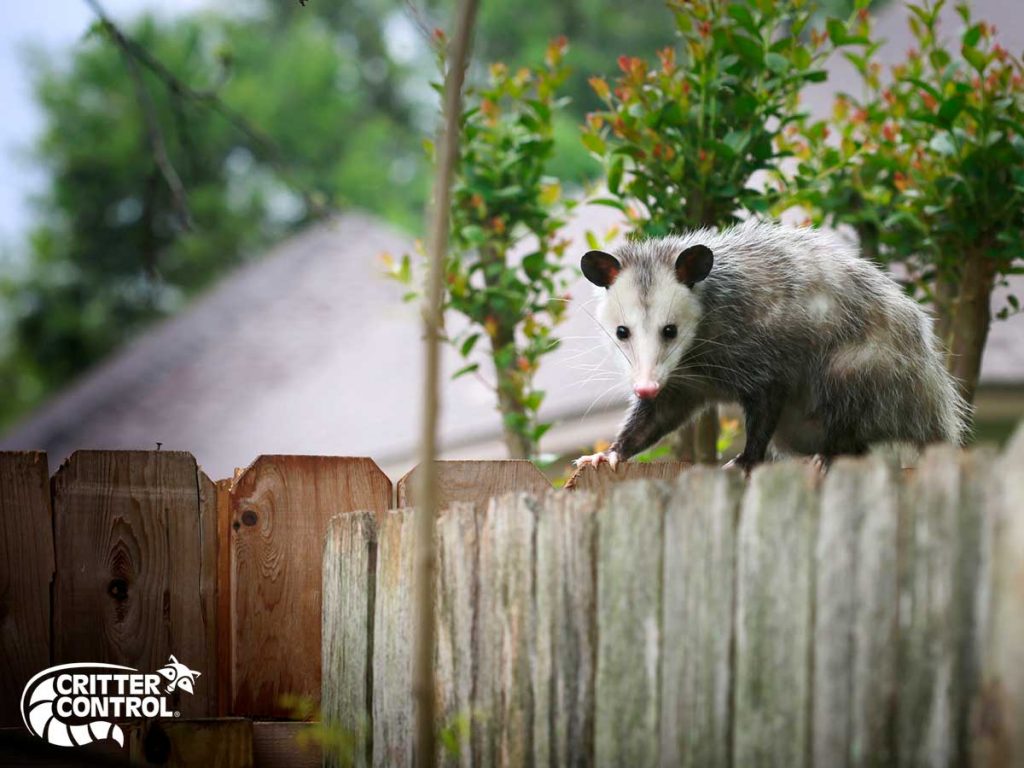
Opossums are very common critters in Central Florida, so it is likely that you’ve seen one outside rummaging through your yard or high-tailing it across the road while you were driving. While generally docile and afraid of people (their bare-fanged hiss is mostly for show), an opossum can still do their fair share of damage to your yard, garden, and lawn in their search for food, water, and shelter.
If you are in search of ways to keep opossums—and the damages they bring—out of your yard, then there are a few helpful tips you can try.
Damages Caused by Opossums
Opossums are attracted to yards that are lush with vegetation they can shelter within and gardens they can feast from. Unsecure garbage cans can also draw hungry opossums to your yard. In their attempt to satisfy their hunger, opossums can damage your lawn and destroy any fruits or vegetables you are growing in your garden.
Once opossums have invaded your yard, it’s just a matter of time before they attempt to gain entry to your home in order to nest and breed. Opossums will target dark areas of your property to hide, such as underneath porches or inside your attic. In their attempt to get inside, they can demolish air ducts and vents, and gnaw through siding and shingles. Once inside, they will shred insulation and contaminate flooring with waste as they establish nests for their young. Such destruction is not only costly but can lead to unpleasant odors and fire risks.
5 Ways to Keep Opossums Out of Your Yard
Here are a few ways you can deter intrusive opossums from your yard:
- Your pets – The mere presence of your domesticated dog, cat, or any other pet can be enough to turn opossums away from your home. However, keeping pet food bowls outside will only attract opossums to your yard, so it’s best to take them inside.
- Your pet’s hair – Even the smell of your pets’ hair can send opossums running scared, so if your furry friends shed at all, you can use their excess hair to sprinkle around your property for additional defense against opossums.
- Mothballs – Opossums do not favor the aroma of mothballs. Placing them around your home in a close pattern can deter possums from nesting nearby.
- Garlic – Similar to mothballs, opossums don’t like garlic. So, you can use pungent garlic cloves around your property for an additional measure of opossum prevention.
- Expert removal methods – While opossums aren’t very aggressive, they are wild, unpredictable, and known to carry diseases, fleas, and lice. To protect your well-being, opossums should be dealt with by licensed and trained professionals.
Professional Opossum Removal for Your Polk County Yard
At Critter Control® of Polk County, our wildlife experts are experienced and equipped to remove unwanted opossums quickly and safely. Our CritterSafe® removal process is comprised of four steps that will humanely remove all nuisance opossums and ensure your property remains critter-free. Our process includes:
- Inspection – First, one of our trained removal experts will carefully inspect your home or property to locate the critters, measure the severity of the infestation, and look for entry points.
- Removal – After fully inspecting your home, our technician will create a safe and humane removal plan that uses cautious and eco-friendly methods to permanently remove the opossum from your home or workplace.
- Restoration – Our team will clean up and repair any damages caused to your property by the opossum.
- Exclusion – After the critters have been removed, our technicians will ensure the opossum never make it back into your home or workplace by sealing off all entry and exit points that allowed them inside in the first place.








